Of the three or four best Old Music groups in the world – and here I’m thinking of the Amsterdam Baroque Orchestra & Choir, the Freiburger Barockorchester, the Monteverdi Choir – I think the Bach Collegium Japan consistently creates the most personal, intimate musical experiences. Of course, this I glean only from recordings and videos, but frankly, it’s even harder to make that quality come across on recorded media.
Posts Tagged: Bach
Double Bills
This is the next step in my online conversation with Eric Benson of Inverted Garden, wherein we discuss taste, society and music from our relative perspectives as jazz and classical icons of the digital age. Eric’s posts are here. Mine are here.
Once upon a time, when Eric and I were both college students in Chicago, we trekked up from Hyde Park to the Chicago Historical Society for the inaugural Contempo Double-Bill. A Contempo Double-Bill isn’t an updated piece of Jeffersonian currency – it’s a concert that pairs contemporary classical music with jazz.
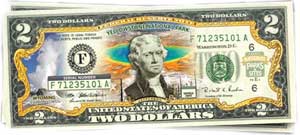
On this concert were works by George Crumb, Chen Yi, and Jonathan Harvey, along with the piano stylings of Brad Mehldau, riding high on his fame as “that jazz pianist who plays Radiohead covers.” (This was in 2004, well before every classical new music performer started doing the same.)
What I remember most about this concert is a group of four high school boys sitting right in front of us who had clearly come for the jazz portion of the evening (these were the Eric Bensons of a quarter-generation later), and that they erupted into laughter when the soprano Valdine Anderson began singing Jonathan Harvey’s “Song Offerings”.
I, obviously, was supremely annoyed, and much more so because these boys were sitting in front of us where my famed Half-Turn Glare was rendered useless. Looking back on it now though, it’s hard to blame them, because a) they were probably high, and b) they came to hear this*:
but what they got was this:
Of which the latter may be a perfectly interesting piece, but it’s hardly the former. This was a case of a classical presenting organization (and New Music, at that) carelessly assembling a double bill in an effort to draw in new audiences without in any way managing the expectations surrounding the event. What did Brad Mehldau’s music really have to do with any of the pieces on the program? Mehldau announced from the stage that he was a fan of George Crumb. So what? I like Rihanna, but people would be PISSED if they came to one of my concerts expecting to hear “Only Girl in the World”.
A stylistically heterogeneous double bill can surely work if the two musics are sharing the same conversation, which brings me to one of the best albums I’ve heard all year (thanks to Eric), Dan Tepfer‘s recent release of the Bach Goldberg Variations, in which he intersperses the Bach variations with his own improvised responses.

This isn’t Crossover – it’s just high order musicianship. What I found so interesting about this album is that Tepfer is able to manage three musical streams simultaneously: first, the thoughtful, affecting renditions of the Bach originals; second, the astonishing array of transformations that he works on each of these works; and third, the way in which he develops these improvisations into a new, autonomous set of musical pieces.
What’s more, it would be a mistake to call Tepfer’s improvisations “jazz”. [In a similar way, it’s almost silly to call the Bach originals “classical”, seeing as there existed no such category when Bach wrote them, not to mention the fact that they transcend any label we try to affix to them.]Â Yes, some of his variations are jazzier than others, but really, this is music about music, drawing from Ellington and Reich in addition to Bach.
So, EB: got any other great examples of successful jazz-classical collaborations (excepting the current co-blogging experience, of course)?
Top 10 BEST Composers
Hi blogfanz – I’m back, and I’m glad to be returning to our top 10 top 10 with List #8, the Top 10 BEST Composers, where by “BEST” we mean something along the lines of “Most Technically Accomplished”.
“Compositional technique” is a phrase that gets bandied around a lot (among a tiny, tiny élite of classical musicians and critics). But I don’t think I’ve ever heard it defined. Composers confront a series of Design Challenges and Execution Challenges as they write a piece. So, is a composer’s technique simply a question of how well he or she executes a given design? Is it possible to separate the design from the execution?
My favorite example of this conundrum is Gordon Jenkins, a composer/arranger from the Golden Era of pop music who wrote beautiful, lush arrangements for Frank Sinatra, Nat King Cole, Judy Garland, et al. As a composer, he specialized in writing “concept albums” for many of these collaborators.
His concepts for these albums were, in a word, ludicrous – Frank Sinatra taking a guided tour of outer space, for example. But the music he wrote to accompany his zany scenarios is gorgeous. It’s like, “yeah, if Frank Sinatra took a space ship to Saturn and then sang a jig about it, this is the best possible version of that jig.” You know?
Here’s what I came up with. We’ll talk more about the criteria at the end:
1. J. S. Bach (1685 – 1750)
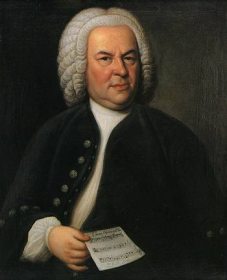
Any person who writes a canon at the 7th, smoothly and gloriously, you do not mess with this person.
(Goldberg Variation 21, Glenn Gould ’54)

2. Johannes Brahms (1833 – 1897)

Here’s some mad compositional technique: Brahms’ Symphony No. 2, second movement, letter D. This audio begins 4 bars before the printed excerpt. Here’s what happens:
00:00Â Impassioned 2-part counterpoint; violins v. lower strings; build-up to
00:11Â The previous two lines are remixed into one, and this composite line is pitted against itself; build-up to
00:21 Dramatic tremolo in strings, winds play the main motive (ascending 3-notes), trombones recall the main motive from the previous movement of the symphony.
00:32 Letter D:

Violins and bassoon play the counterpoint from the beginning of this movement, flute and oboe keep playing the motive from the last section, long tones in the lower strings build drama and tension into
00:48Â Parallel section to 00:21
This is what we call ‘tightly constructed’ – the themes all relate to each other, play against each other, appear and reappear, and build up into a large scale structure. But honestly, you don’t have to appreciate ANY of this to enjoy the symphony. This wealth of composerly technique is in the service of beautiful, dramatic, and emotional musical story-telling.
3. Ludwig van Beethoven (1770 – 1827)
I say we let Lenny sort us out on this one:
4. (F.) Joseph Haydn (1732 – 1809)
Now, a lot of the tricks that Lenny was just talking about w/r/t Beethoven, I’m convinced Beethoven learned from Haydn. That is to say – the guy (Haydn) was killer when it came to form. But he (Haydn) also happened to be really good at all the things Lenny claims Beethoven sucked at: melody, harmony, fugues, etc. Haydn dazzles us, leaves us spinning, and has a ball doing it.
So for all his fancy tricks, I’m going to present a passage that seems rather mundane – just 8th notes, in pairs. The trick though, is that he slowly modulates the harmony, dynamics, and instrumentation to bring us back to the opening theme of this, the last movement of his 88th Symphony:
(score picks up on 00:04)


It’s like you’re driving around some back country roads, and just when you think you’re totally lost, you look up and it turns out you’re back where you started. That’s Haydn.
5. Johannes Ockeghem (1420ish – 1497)
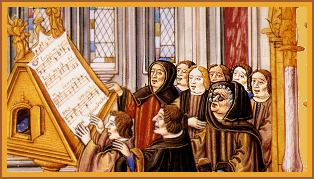
I’m hardly an expert on this composer or his music. But like many an undergraduate music major before and since, I did at one time learn about the staggering contrapuntal accomplishments of Flanders’ greatest son.
Let’s look at his most famous work, the Missa Prolationum, so called because of its extensive use of “prolation canons”. It works like this: you all know what a canon is – “Row, row, row yr boat”, “Frère Jacques”, etc., anything where one guy sings a tune and the other guy starts singing the same tune a little later and it all works out harmonically. Well, in a “prolation canon” (which is more commonly known as a “mensuration canon”), the two guys sing the same tune at different speeds. Normally, they have a relation to each other – like twice as fast or twice as slow.
They don’t always have to stagger their entrances either – they can both start singing at the same time and it still counts. Ockeghem took this idea of mensuration canons to the extreme. Here’s the Kyrie II from his mass. There are two melodies: one in the soprano and alto, and another one in the tenor and bass. The soprano and alto sing their melody at different speeds. The tenor and bass sing their melody at two entirely different speeds. What’s more, the two melodies are very closely related.
You try to do that.

6. Claude Debussy (1862 – 1918)
I’ll turn over the floor again, this time to Esa-Pekka Salonen:
7. Wolfgang Amad̩ Mozart (1754 Р1792)
I don’t know where to even begin talking about Mozart’s ridiculous compositional technique, but you can’t do much worse than the final set of canons in his last symphony, No. 41 (the “Jupiter”). This piece is chock full of canons, fugues, and other contrapuntal devices – and yet, you never get tired of them (unlike, let’s admit it, Bach). It’s just one vivacious bar after another:



8. Gy̦rgy Ligeti (1923 Р2006)
With a mind to the generalish audience that sometimes reads this blog (if anyone’s actually made it this far), let’s turn again to the Hungarian composer’s Nonsense Madrigals, based on texts by Lewis Carrol.
Here’s “Flying Robert”:
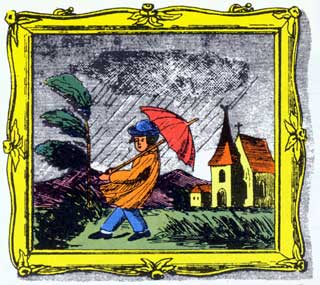

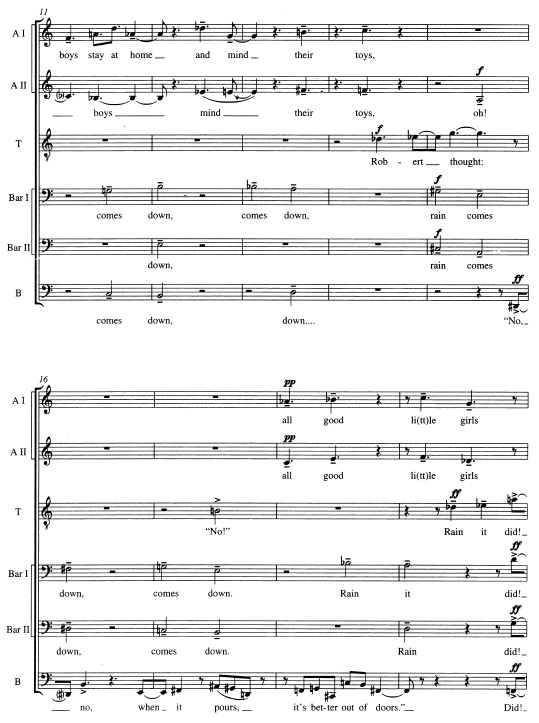
So what makes this so great? Well, first off, let’s figure out what’s going on.
Element the first: The tenor has a melody (“when the rain… when the rain comes tumbling down… in the country or the town”). Each of the three phrases of the melody begins the same and builds to a higher note. The rhythm of the melody is irregular – it has a rhapsodic quality.
Element the second: This piece is a passacaglia, which means there is a repeated, regular figure in the bass line. Ligeti does that and also includes the two baritones in establishing the pattern. So even though this pattern gets shifted from beat to beat, there is a regular pulse going on, grounding the music.
Element the third: When the altos come in, they pick up the tenor’s melody, but their rhythm mimics the regular pulse of the passacaglia people, but shortening their pulse by 1/4 of the value. Just to make things a little more complicated, at the top of the third system, the second alto starts drifting off into his own little world.
So again, what’s so great about this? It’s that Ligeti combines the elements in a way that gives the listener a simultaneous sense of regularity and irregularity – everything sounds natural but odd, logical but unpredictable. It works like a precision machine, as does much of his music, including the wild, 100-instrument scores from his early period.
9. Igor Stravinsky (1882 – 1971)
I’ll admit, there’s occasionally things that are clumsy in Stravinsky’s writing – some of his meter and barring choices can be rather confusing at times – but the flaws are very minor, and easily overlooked when taken in context of his overall skills as a writer of music.
Since fugues seem to be a common theme of this list, here’s a great one:


10. Alban Berg (1885 – 1935)
 Alban Berg, the shining light of the Second Viennese School, has gotten all too little love up in these lists so far. Finally, we’ve arrived at his category.
Alban Berg, the shining light of the Second Viennese School, has gotten all too little love up in these lists so far. Finally, we’ve arrived at his category.
What I personally find so impressive about Berg’s writing is his ability to unite disparate elements. He chose to use a wide range of compositional tools: tonality, atonality, dodecaphony. He wrote waltzes and polkas, but infused them with eerie harmonies. He wrote startling, arhythmic sound masses and contrasted them with delicate, crystalline chords.
His opera Wozzeck is practically a textbook of compositional forms. But I’ve chosen the most famous passage from his Violin Concerto to illustrate how he so skillfully combined vastly different musical worlds:


Berg’s going from a huge dissonant cluster to a quotation of Bach. What’s admirable is the smooveness with which he does it: the chorale melody starts with a rising 4-note motive. He introduces this motive in the violin during the most dissonant music. Then he gives us the tune, but it’s set against slightly less dissonant music. By the time the winds enter on Bach’s harmonization, it makes all the sense in the world.
Discuss
So, in choosing the composers on this list, I think I settled on the following criteria for great compositional technique:
1) handling of counterpoint (multiple, simultaneous lines)
2) tight motivic construction (building melodies and sections of music out of small themelets)
3) form (a logical succession of musical ideas, paced correctly so that the music seems to follow a logical flow)
4) ability to contrast and unite disparate musical ideas (which nobody does better than Schnittke, and I hate not including him on this list)
And then there’s the matter of, given their resources, how well did these guys write the stuff down on a score? Sibelius is one of my favorite composers, but his scores are a certifiable mess when it comes to logic and consistency. Ligeti’s scores are nearly as virtuosic in their meticulous layout and instructions as they are in their musical content.
So, y’all, what do you make of these criteria? And who fits it? My guys, or some other peops?
If you’ve made it this far, it’s time to let your voice be heard in the comments section!
Top 10 Genre Composers
This list, #6 on our Top 10 Top 10, is kind of a free-for-all. I wouldn’t say it’s as vaguely defined as that last list, but it’s definitely more of a game game than trying to analyze who the most influential composers were. The idea is to pick composer whose overall output may not have been worthy of the greatest pantheon, but who did write one genre of music better than anyone else.
You’ll pick it up as you go along.
1. Johann Strauss Jr. (1825 – 1899) – Waltzes
 Nothing beats a good old fashioned waltz. I use them in my own music all the time. And nobody ever wrote a better waltz than the great Viennese legend Johann Strauss, Jr. He was so passionate about three-quarter time that he even defied his famous composer father – in order to follow in his very footsteps (Johann Sr. had a banking career in mind for his sohn.)
Nothing beats a good old fashioned waltz. I use them in my own music all the time. And nobody ever wrote a better waltz than the great Viennese legend Johann Strauss, Jr. He was so passionate about three-quarter time that he even defied his famous composer father – in order to follow in his very footsteps (Johann Sr. had a banking career in mind for his sohn.)
He is rightly fêted every year on New Year’s Eve by the World’s Greatest Strauss Orchestra, the Vienna Philharmonic:
(Rosen aus dem Süden, VPO/Boskovsky)
2. Charlies Villiers Stanford (1852 – 1924) – English Church Music
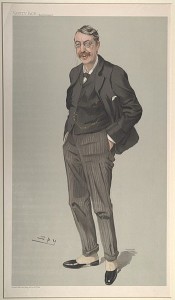 Leave it to an Irishman to best the English at their own game. The English choral tradition is a quite specific thing. There’s the whole issue of dueling churches, the Anglican and the Catholic. Certain composers specialized in one or the other. Certain composers were glad to be denominational mercenaries.
Leave it to an Irishman to best the English at their own game. The English choral tradition is a quite specific thing. There’s the whole issue of dueling churches, the Anglican and the Catholic. Certain composers specialized in one or the other. Certain composers were glad to be denominational mercenaries.
Another irony in my selecting Mr. Stanford for this particular honor is that I submit as his outstanding work a Latin Motet:
(Beati Quorum Via, Cambridge/Rutters)
3. Kurt Weill (1900 – 1950) – Cabaret Songs
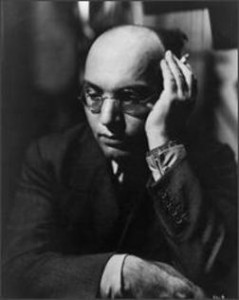 What I love about Weill’s songs is how sardonic they are. He displays a remarkably dark wit in the interplay of his spiky harmonies with the light lyrics (which he didn’t write). His music represents the gritty world that his characters inhabit.
What I love about Weill’s songs is how sardonic they are. He displays a remarkably dark wit in the interplay of his spiky harmonies with the light lyrics (which he didn’t write). His music represents the gritty world that his characters inhabit.
I also like how many of his cabaret songs are real Cabaret Songs – that is, the lyric sets them inside an actual cabaret. It’s much like a Saloon Song.
(“Alabama Song”, Marianne Faithfull)
4. Giacomo Puccini (1858 – 1924) – Opera
Puccini appears on my lists of Top 10 Melodists and Top 10 Composers for Non Concert Settings (i.e. the stage). So, it should be pretty obvious why I would put him as the top opera man. I’ll be interested to see if the Wagner contingent mounts a strong defense. As much as I adore Richard’s music, I’d prefer to listen to it in smaller, concert-sized chunks.
5. Vladislav Zolotaryov (1942 – 1975) – Bayan Music
OK, so here’s a composer and an instrument that you’ve likely never heard of, but get ready, because it’s going to be way better than you expected.
First off, this is a bayan:

Basically, it’s a Russian/Eastern European accordion, which differs from the regular accordion in some way or another.
[Now, apparently there is an alternate meaning to the word ‘bayan’ of which I’m wholly unaware. If you want to find out what it is, or what it might be, or what ‘bayan’ might autocorrect to in some bizarre google conspiracy world, you could do a google image search for ‘bayan’, but I strongly recommend against it.]
So, we’ve established that much. Everything I know about this composer’s biography comes from the liner notes of the one CD I’ve found with his music on it. Apparently his parents were prisoners of the Gulag and he was born in the northernmost region of northeastern Siberia. Great start. He excelled at the bayan, and got some training in music at a small conservatory. He was rejected several times from the Moscow Conservatory before he finally made it in to study composition. He committed suicide at the age of 33.
He composed a number of pieces for other instruments, but this is where he made his mark:
(“I’m recalling instances of gloomy sorrow”, David Farmer)
6. (F.) Joseph Haydn (1732 – 1809) – Minuets
In many ways, I think the minuet was Haydn’s genre par excellence. These pieces were not written for dancing. They were written to add a dance scene into the dramatic flow of his symphonies (as I touched on in the discussion of Piazzolla in last list.) Haydn was a wry observer of human interaction, and he humanizes his noble acquaintances in these minuets.
We might hear the heavy brocade weighing down the upper crust, or see the lush curtains and the warm glow of the gaslit ballroom. We might sense the hesitations and embarrassments of the youth present, relishing their only opportunity for flirtation in a highly formalized milieu (then we catch them as they sneak out to the veranda.) There are the dancers who don’t quite know the steps and their bashful apologies; then there are the big fat ladies with two left feet who couldn’t be less aware.
It’s all just so funny and charming and gemütlich:
7. Sufjan Stevens (1975 – ) – Pensive Old-Testament Banjo Ballads

OK, so there’s obviously a lot of things that Sufjan Stevens does impressively well. And in my opinion, there’s a lot of things he does better than anyone else. But in this category, he’s pretty much got to be the undisputed leader, right?
8. J. S. Bach (1685 – 1750) – Music for Solo Strings
I think Bach’s cello suites and solo violin sonatas & partitas are every bit as great an accomplishment as his works for organ and the big choral-orchestral combinations. Not only are they shockingly original and deeply emotive, but they link him to other European masters of the solo viol, like Marin Marais and the incorrigible Monsieur de Sainte-Colombe.
9. W. A. Mozart (1754 – 1792) – Piano Concerti
This is a genre-composer combination on many levels: that is to say, not only do I think Mozart wrote the definitive collection of piano concerti, but I think that the piano concerto was the definitive Mozart genre. So chew on that one for a while.
For me, these are Mozart’s greatest operas. They have the beauty, the drama, and the songfulness of his operas, but they condense the plot into about 30 minutes. Who wouldn’t like that?
(D minor concerto, Brendel, St. Martin/Marriner)
10. Michel LeGrand (1932 – ) – Jazz Opera Film
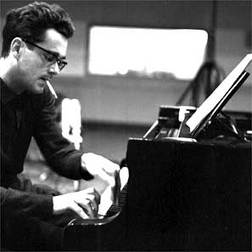 Aside from Les Parapluies de Cherbourg, just how many other Jazz Opera Films are there? Well, there’s a least one: Les Demoiselles de Rochefort – ALSO by Michel LeGrand. I’d say he sweeps this category.
Aside from Les Parapluies de Cherbourg, just how many other Jazz Opera Films are there? Well, there’s a least one: Les Demoiselles de Rochefort – ALSO by Michel LeGrand. I’d say he sweeps this category.
No but seriously, he wrote such a gorgeous score for Les Parapluies. And I know there’s a lotta h8trs out there, and h8trs gotta h8t. And I hate that Steven Sondheim is one of them, and that he said that he thinks this “just doesn’t work” or whatever. But then again, he was in Camp which might be the worst movie ever made, so with all due respect Steve, let’s just tone it down an notch, shall we?
I mean, come on:
Discuss
This is easily the most ridiculous list so far. [Just you wait!] But I think it should make for a good game, because there’s at least three ways to play:
1) Make your own damn list
2) Replace the composer for the category.
Example: Khatchaturian was a way better writer of waltzes than Johann Strauss Jr. ever was! [as if]
or Thomas Tomkins was a much finer composer of English choral music than was Charles Villiers Stanford! [perhaps…]
3) Drop one of my category-composer combos and say that your guy did his thing better than mine did his.
Example: Conlon Nancarrow was a much better writer of boogie-woogie piano rolls than Kurt Weill was of Cabaret Songs!
Top 10 Most Influential Composers
List #2 in my Top 10 Top 10 lists game. Today, we look at the composers whose music inspired the musicians who came after them. I’d like to note that, in general, this is something that is totally out of a composer’s control – how can they possibly know if their musical language will be absorbed by anyone following them? [The big exception is people like Shönberg who were also significant teachers and disseminators.] So, I’m mostly trying to judge a simple historical fact here, not a composer’s talent or skill in “being influential”.
1. Guillaume de Machaut (1300 – 1377)

I realize it’s sort of obnoxious to start my list with someone who is only slightly older than music itself, and whose name is only vaguely familiar to the most astute of Early Music History Review students, but isn’t being sort of obnoxious one of the tenets of good blogging?
Guillaume really does deserve pride of place here for a lot of reasons – basically, he influenced a century and a half of musicians after him, something that very few other people have done. He popularized the use of four voices in mass settings, he added complexity to popular song forms, and he was also an accomplished poet. His intense vanity compelled him to publish his “collected works” in several volumes at the end of his life, something noone else had ever done and something that added considerably to the idea of music publishing and dissemination, not to mention scholarship.
Guillaume’s music sounded like this:
(Messe de Notre Dame, Hilliard Ensemble)
Influenced: Basically every 14th, 15th, and 16th century composer right up through Josquin and Vittoria. In fact he’s so influential, that some crazy person let loose on the grounds of Deutsche Grammaphon’s corporate headquarters even released a CD of Machaut remixes (including one by Brad Mehldau).
2. Johann Sebastian Bach (1685 – 1750)

Time to break out the big guns, boys – Johann’s in town. Bach’s name will appear on a good many of these lists, because he did a good many things. Even though he was beyond everyone in his own time period, he was considered old-fashioned. Ever the musician’s musician, he continued to be revered by composers and scholars even when his public image languished.
Influenced: His sons (JC, CPE, and the rest of his alphabetic brood), Haydn, Mozart, Beethoven, Schumann, Mendelssohn, Chopin, Brahms, Hindemith, and probably everyone that ever wrote two lines of counterpoint.
And he very definitely influenced Mahler. From deep in the bowels of the “Resurrection” Symphony:
3. George Gershwin (1898 – 1937)
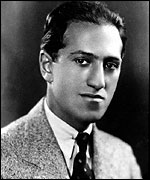
In his short lifespan, George Gershwin wrote popular tunes that were irresistible to broadway, classical, and jazz musicians alike. Jazz musicians in particular latched on to his melodies and practically invented the idea of “standards” around them.
Meanwhile, he influenced several generations of popular classical composers (especially Lenny Bernstein) to try out jazzier idioms in the concert hall. I don’t think any single person is more responsible for the state of popular music worldwide than George Gershwin.
Here’s a little tour through 20th c. popular music history via Gershwin’s “Summertime”:
Influenced: Bernstein, Sondheim, Ravel, Richard Rodgers, Cole Porter, Ferde Grofe, Duke Ellington, Billy Strayhorn, every jazz musician who ever soloed over “Rhythm Changes”, every jazz composer who ever wrote a new tune over “Rhythm Changes”, every pop composer up to the present time who ever stole the descending bass line pattern from “I got Rhythm” (otherwise known as “Rhythm Changes”), at least.
4. (Franz) Joseph Haydn (1732 – 1809)
Papa was on our first list because he was a musical ground-breaker, but he appears on today’s because all his innovations were taken up by other people.
Influenced: Mozart, Beethoven, Brahms, Prokofiev, Ravel, and literally anyone who ever wrote a symphony or a string quartet.
5. Wolfgang Amad̩ Mozart (1754 Р1792)
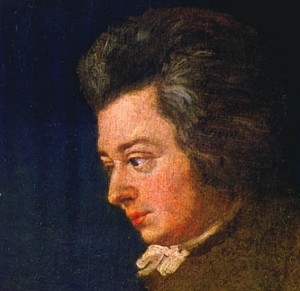
Master of every domain, including opera, chamber music, symphony, and concerto, Mozart cast a wide net over his successors. Not surprisingly, opera composers down the ages worshiped him – Rossini was even dubbed “The Little Mozart” because of his affinity for the composer.
Tchaikovsky, however, was probably his most ardent admirer. Tchaikovsky’s opera The Queen of Spades is totally saturated with Mozart, but I don’t even know if Mozart could have written as Mozartean a number as this:
(“Moi milenki druzhok”, Gergiev)
Influenced: Tchaikovsky, Rossini, Schubert, Schumann, Haydn, Beethoven, Stravinsky, Rachmaninoff.
6. Arnold Sch̦nberg (1874 Р1951)
This poor man is so maligned for having opened the Pandora’s box of 20th century modernism in music. And with good reason. Starting with his close circle of pupils in Vienna, everyone just had to compose using his various systems. The real hook was dodecaphony, Schönberg’s principal for organizing the 12 pitches into previously unthought-of combinations. The 12-tone technique spawned an even more mathematically rigorous offspring: serialism.
There’s no point in judging whether or not this was a good thing – it simply is what happened.
Influenced (for better or for worse): Berg, Webern, Boulez, Nono, Messiaen, Stravinsky, Stockhausen, Eisler, Babbitt, Sessions, Wolpe, and leagues of other composers who wrote even uglier music.
7. Ludwig van Beethoven (1770 – 1827)
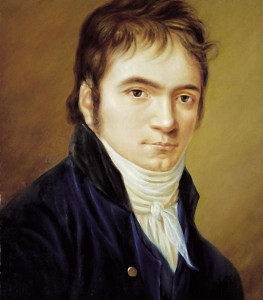
Beethoven’s an interesting case – sometimes he even influenced people not to compose. That was the case with Brahms who couldn’t get it up to write a symphony while Beethoven’s shadow was still in the room. More than any technical specific procedures, I think Beethoven’s biggest influence was in the philosophical scope of music – would Mahler ever have been able to compose the “Resurrection” symphony without Beethoven’s “Ode to Joy”?
Influenced: Berlioz, Schumann, Brahms, Bruckner, Ravel (I think), Bartok, Mahler, anyone who put a chorus in a symphony, anyone who ever thought music could literally change the world.
8. Richard Wagner (1813-1883)

Few composers had such a devoted cult in their own lifetime (not to mention after). Wagner’s innovations were far reaching, and spread like wildfire. Others had used themes to represent characters and objects before, but Wagner’s organized use of leitmotifs became a principle followed by several generations of composers. He also influenced a number of non-compositional disciplines: conducting, dramatic staging, architecture, and, unfortunately, philosophy.
Influenced: Mahler, Strauss, Zemlinsky, Schoenberg, Webern, Berg, Franck, Sibelius, Puccini, Rachmaninoff, Dvorak, Elgar, Max Steiner, Karl Goldmark, Howard Shore, and anyone who wanted to convey a dramatic impulse through music.
9. Mikhail Glinka (1804 – 1857)
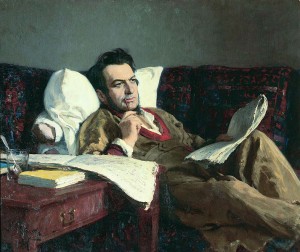
I know hardly anything about this man or his music, but what I do know is that any time you read anything about a Russian composer who came after him, those guys are always talking about how big an influence he was. So, it’s a slightly “provacative” inclusion on this list (and yes, I do expect wide-spread violence as a result of it) but maybe it will induce someone – anyone – to give his music a first listen and a fair shake.
Tchaikovsky adapted this theme from Glinka’s “Ivan Susanin” for the head motif of his 5th symphony:
Influenced: Tchaikovsky, Borodin, Mussorgsky, Rimsky-Korsakov, Glazunov, Rachmaninoff, Shostakovich
10. Claudio Monteverdi (1567 – 1643)
In the first list, I quoted the eminent music scholar David Ewen in noting Monteverdi’s profound accomplishment. The fact that we still have people writing operas today is largely due to him CM, not to mention the fact that he more or less invented the idea of instrumental tone painting.
Influenced: Schütz, Cavalli, Lully, Scarlatti, Rameau, Vivaldi, and essentially everyone who ever wrote an opera.
Discuss
Rules of the game: either submit your own top 10 list, or submit one or more alternates to my list in the comments section. If you choose the latter option, note that you must replace someone on my list, and make sure you tell us who it’s going to be.
Or just use this space to chat amongst yourselves about various Influential composers. “Composers”, for our purposes, means people who write music using any Western notation (it could be of their own devising). There is no limit as to genre or time period, so I’d be very interested to see some bizarre responses (think: Anton Reicha).